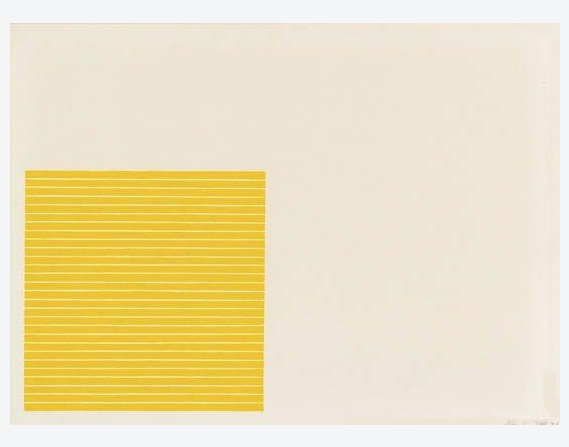By Madison Allen
In the mid 20th century abstract art exploded into the art vernacular in America. Split into two waves – gestural and colour-field painting – a purist approach to painting emerged. Rather than responding to the cultural ideologies of the time, abstraction detached itself from society and instead looked to its predecessors. Art looked to propel itself forward on its own terms. Subject matter was abandoned and mediums criticised from within, isolating each medium’s unique quality. Self-criticism for painting relied on a canvas’ flatness, and over time, colour; since blocks of colour could be viewed as a defiant force to the illusion of three-dimensionality.
Gestural Painting
Gestural painting, or commonly known as ‘Action Painting,’ places emphasis on the physical action of applying paint. The canvas becomes an arena where bodily movements informs the configurations of skeined, dripped or smeared paint. A seemingly automatic approach; gradual or abrupt swelling and swift changes in direction infuse line and shape with a sense of uncontrolled motion.

Colour-field painting
Colour-field painting relies on colour itself to become the subject, entrusting large fields of flat, solid colour to provide horizontal breadth. Sharp reds could advance upon the viewer, while cooler blues contracted inward.

Abstract Art
Abstract art focuses on the pure visual quality of the work. Representation emerges gradually, expressively and emotionally through line, colour and shape. A freeing art form, abstraction removes itself from the shackles of concrete representation and relies on feeling and viewer experience. Art; now for art’s sake.
Looking beyond what might seem initially simplistic, there are a few ways of spotting quality and distinction in a work of abstraction.
- Intention: despite abstract art often appearing uncontrolled and random, quality abstraction will show intention behind every stroke. Every brushstroke – whether it’s poured, slashed, or dribbled across the canvas – adds further depth to the narrative.
- Conscious composition: It is easy to get lost or overwhelmed in a piece of abstraction. Finding the axis often brings symmetry to the composition. While this may not be immediately apparent (often done purposefully) the balance created by an axis will give the painting structure and rhythm.
- Deliberate Textures: Layers of paint and blocks of colour are premeditated and applied consciously, existing to contribute to the overall sense of balance and structure. Take a moment to unearth the motive behind each texture – whether it increases the sense of movement, or gives a moment of clarity.

Here are two of .M Contemporary’s abstract and contemporary painters – Cameron Haas and Maria Jose Benvenuto – to consider.
CAMERON HAAS
Australian painter Cameron Haas liberally paints organic forms of solid colour, where the edges are fluid and flawed, and an intuitive harmony is achieved. Tight, sliding and brightly-coloured forms – which brings to mind Frank Stella and Mark Rothko – proliferate. A significant amount of time is spent in preparatory drawings as Haas slowly develops forms and builds narrative between each. Transferred onto the canvas with large brushes; shape, line, edge and tone are then constantly re-worked. Although the surface appears predominantly flat, Haas adds touches of personal flair and movement in his application of texture – looking closer will reveal previous layers of colour and changes in the edge quality. The final form Haas reveals is the edges of his canvas, allowed to prevail and defining a two-dimensional space that the forms coexist within.


MARIA JOSE BENVENUTO
Maria Benvenuto focuses on the chaotic and meditative Australian landscape that surrounds her, creating paintings that contain layers of information that can be looked at and peered through. She oscillates between broad, sweeping brush strokes and dripping paint immediately onto the canvas, creating a dense strata of geometric shapes and lines. Taking a moment to survey her works, the abstract forms reveal and explore narratives and dialogues she witnesses around her. Bevenuto’s paintings often vacillate between contrasts of transparency and density, static and kinetic movement, and chance and control. Once informed by the imposing peaks which towered down on her in her first home in Chile, it is now the endless vistas of Sydney’s landscape that strikes her.





